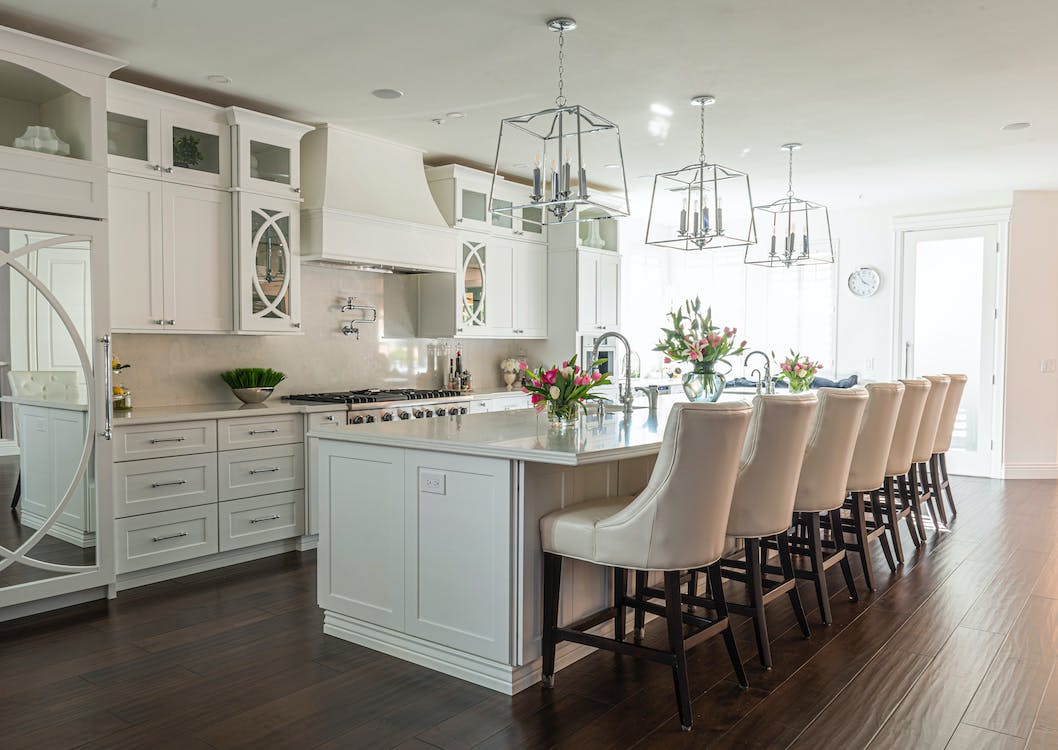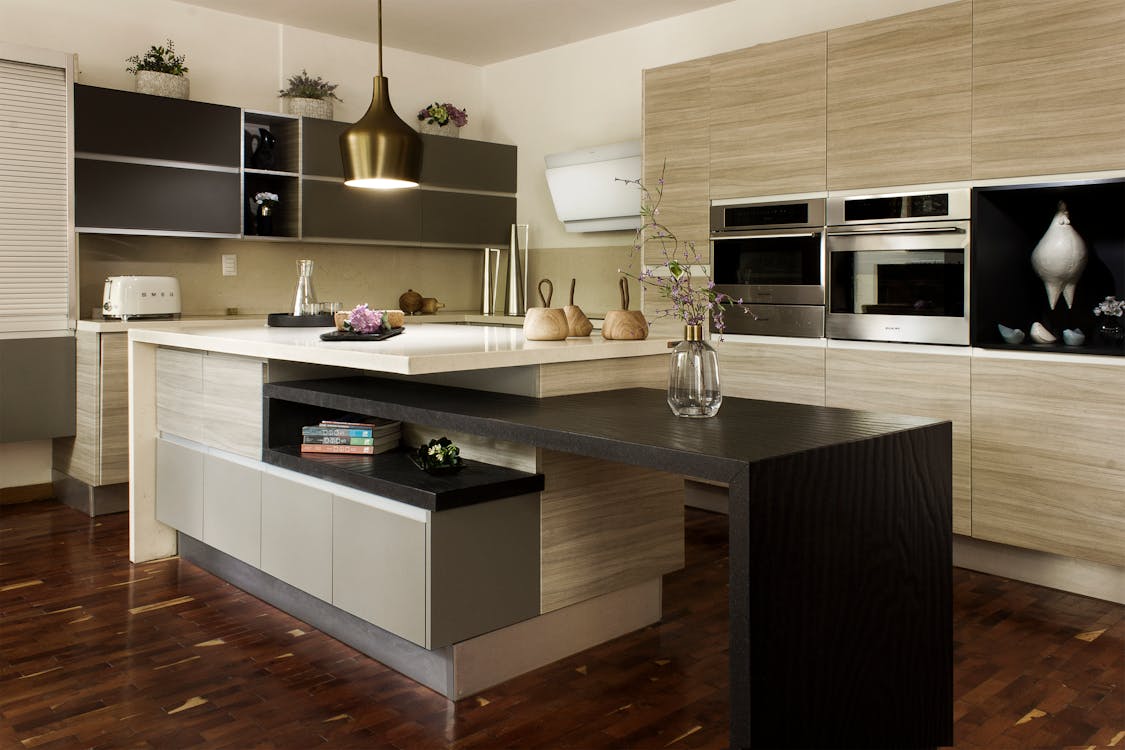
When it comes to cabinet construction, one of the most crucial decisions you’ll face is choosing between “1/2 vs 3/4 plywood for cabinets” and the overall “Plywood Thickness for Cabinets” plays a pivotal role in determining the overall quality and durability of your cabinetry. In this article, we’ll delve into the key differences between “1/2-inch” and “3/4-inch” plywood for cabinets, exploring the impact of this decision on your woodworking project.
Understanding Plywood Thickness for Cabinets
To begin, let’s clarify these measurements. “Plywood Thickness for Cabinets” is often expressed in fractions of an inch, and in this context, we’re comparing “1/2-inch” plywood, precisely half an inch thick, with “3/4-inch” plywood, which measures three-quarters of an inch in thickness.

Strength and Durability
One of the most critical factors to consider when deciding between “1/2-inch” and “3/4-inch” plywood for cabinets and when assessing “Plywood Thickness for Cabinets” is the difference in strength and durability. Generally, thicker plywood tends to be stronger and more resilient to sagging or warping over time. “3/4-inch” plywood stands out for providing superior strength when comparing “1/2 vs 3/4 plywood for cabinets,” making it an excellent choice for constructing cabinet boxes and frames. It can handle heavier loads and better resist wear and tear compared to “1/2-inch” plywood.
- Thickness Matters: Thicker plywood, such as 3/4-inch, generally provides greater structural strength. This added thickness can contribute to the overall durability of your cabinets.
- Weight-Bearing Capacity: 3/4-inch plywood can bear heavier loads without sagging or warping over time. This is particularly important for base cabinets that need to support kitchen appliances, cookware, and dishes.
- Resistance to Wear and Tear: Thicker plywood tends to be more resistant to wear and tear, making it a suitable choice for cabinets that will see frequent use, especially in high-traffic areas like kitchens.
- Longevity: Cabinets constructed with 3/4-inch plywood are more likely to have a longer lifespan, reducing the need for repairs or replacements in the future.
- Sturdier Cabinet Frames: If you opt for 3/4-inch plywood for cabinet frames, you’ll have a sturdier and more robust structure to work with, which can enhance the overall quality of your cabinets.
Cost Considerations
While “3/4-inch” plywood offers enhanced strength in the context of “1/2 vs 3/4 plywood for cabinets” and when evaluating “Plywood Thickness for Cabinets,” it typically comes at a higher cost compared to “1/2-inch” plywood. The price differential may vary based on the quality and type of plywood you select. If you’re operating within a tight budget and evaluating “Plywood Thickness for Cabinets,” “1/2-inch” plywood could be the more cost-effective option. However, it’s crucial to note that opting for thinner plywood may compromise long-term durability.
Cabinet Design and Application
Your choice between “1/2-inch” and “3/4-inch” plywood when considering “1/2 vs 3/4 plywood for cabinets” and when assessing “Plywood Thickness for Cabinets” should also align with your cabinet design and intended application. If you’re crafting wall-mounted cabinets or cabinets with a lightweight design when evaluating “Plywood Thickness for Cabinets,” “1/2-inch” plywood may be sufficient. On the other hand, for base cabinets or pantry cabinets that need to support substantial kitchenware or food items when examining “Plywood Thickness for Cabinets,” “3/4-inch” plywood stands as the superior choice due to its sturdiness.
Appearance and Finish
Aesthetics should not be underestimated when selecting plywood thickness for cabinets, particularly when considering “1/2 vs 3/4 plywood for cabinets” and when evaluating “Plywood Thickness for Cabinets.” Thicker plywood may result in bulkier cabinet sides and frames, potentially impacting the overall visual appeal in the context of “Plywood Thickness for Cabinets.” If you’re aiming for a sleek and modern look when assessing “Plywood Thickness for Cabinets,” “1/2-inch” plywood might be more suitable. However, even with “3/4-inch” plywood when examining “Plywood Thickness for Cabinets,” you can achieve a polished appearance by using edge banding or selecting cabinet styles that complement the thicker material.
- Visual Impact: The choice of plywood thickness can significantly impact the visual aesthetics of your cabinets. Thicker 3/4-inch plywood often results in a more substantial and traditional appearance, while 1/2-inch plywood can provide a sleeker and more modern look.
- Edge Banding: Thicker plywood allows for more robust edge banding, which can enhance the appearance of cabinet edges and provide additional protection against wear and tear.
- Profile and Style: Consider the cabinet profile and style you want to achieve. Thicker plywood may be well-suited for classic, Shaker-style cabinets, while thinner plywood can work beautifully for contemporary, frameless designs.
- Customization: Thicker plywood provides more material to work with, allowing for intricate designs, raised panels, and decorative elements that can elevate the overall appearance of your cabinets.
- Paint and Finish: Both 1/2-inch and 3/4-inch plywood can be finished and painted to achieve the desired appearance. Thicker plywood may require additional sanding and finishing steps to achieve a smooth surface.

In the “1/2 vs 3/4 plywood for cabinets” debate when evaluating “Plywood Thickness for Cabinets” and considering “1/2 vs 3/4 plywood for cabinets,” there is no one-size-fits-all answer. Your decision should be guided by your specific project requirements and budget constraints when assessing “Plywood Thickness for Cabinets.” To summarize, whether you opt for “1/2-inch” or “3/4-inch” plywood when considering “1/2 vs 3/4 plywood for cabinets” and when evaluating “Plywood Thickness for Cabinets,” each has its unique advantages. Carefully assess your project’s needs to ensure your cabinets not only look impressive but also endure the test of time when evaluating “Plywood Thickness for Cabinets.”
